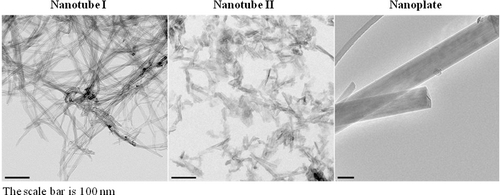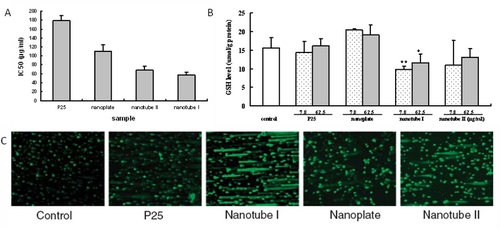Researchers from Nanobiomedicine Research Division with collaborators from i-Labs at Suzhou Institute of Nano-Tech and Nano-Bionics (SINANO), CAS have investigated the bioactivities of three newly synthesized nano-materials which had applicable bacteriacidal capabilities.
Three forms of nano-trititanate (H2Ti3O7 nanomaterial) were prepared by a hydrothermal method to replace nano-TiO2 for sterilizing the environment. The bactericidal capabilities of these nano-trititanates were observed to be more significant compared to nano-TiO2 both with and without exposure to UV light. For the future commercial applications of those nano-trititanates, Their cytotoxicity and genotoxicity were investigated on HEp-2 cells. As data shown, nanoplate, one of the nano-trititanates, possesses the lowest toxicity to HEp-2 cells. The results indicated that the shape and length of the material only affect the toxicity of nano-trititanate but not its bactericidal effect. Thus, through manipulating the shape or length of nano-trititanate, we may obtain a more powerful bactericidal reagent with lower toxicity to the human body.
The work has received supports from the National Natural Science Foundation of China (No. 10704051, No.581 30870683, No. 50950110349). The findings have been published on line on May 9th in Nanotoxicology.
 |
|
Figure1. Morphology and size of nanotube I, nanotube II, and nanoplate observed by TEM Image by SINANO |
 |
|
Figure 2. Summary of toxicity effects for nano-trititanates. (A) MTT assay, (B) GSH assay, (C) comet assay Image by SINANO |
downloadFile
